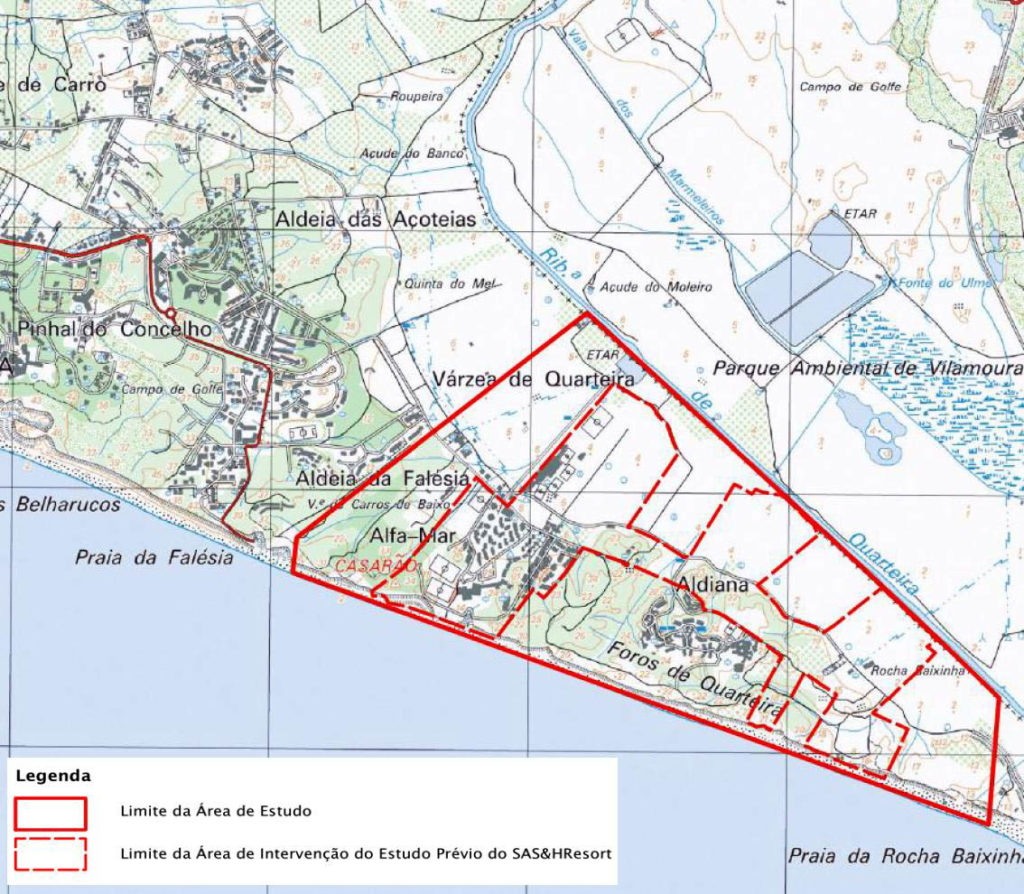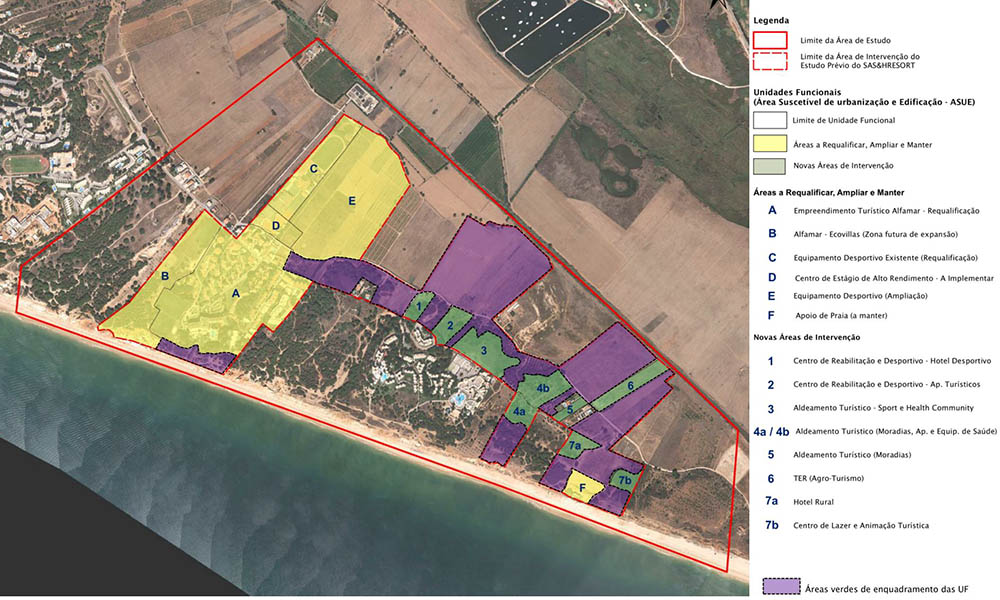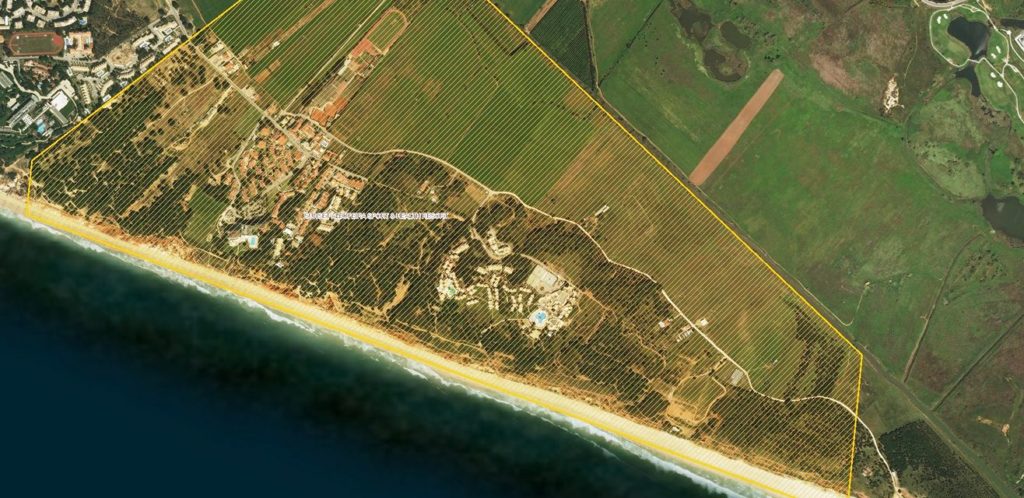 The Sunset Albufeira Sport & Health Resort project, a tourist development planned for a land of almost 100 hectares, on the coast of the municipality of Albufeira, next to Praia da Rocha Baixinha and in the surroundings of the current Alfamar hotel, was rejected” by the Study Evaluation Committee of environmental impact, announced today the Regional Coordination and Development Commission (CCDR) of the Algarve.
The Sunset Albufeira Sport & Health Resort project, a tourist development planned for a land of almost 100 hectares, on the coast of the municipality of Albufeira, next to Praia da Rocha Baixinha and in the surroundings of the current Alfamar hotel, was rejected” by the Study Evaluation Committee of environmental impact, announced today the Regional Coordination and Development Commission (CCDR) of the Algarve.
The tourism development, which had been presented for evaluation in the preliminary study phase, received an "unfavorable opinion" from the Evaluation Committee, and the environmental impact statement (DIA) of unfavorable sense was issued on 29 November.
The Evaluation Committee, chaired by CCDR Algarve, concluded that, «with the exception of the consolidated tourist areas of the Alfamar tourist development, the planned new developments conflict with the existing territorial management instruments and are irremediably non-compliant with the public utility restrictions of the National Ecological Reserve (REN) and National Agricultural Reserve (RAN) applicable'.
If implemented, the development, which would occupy a land with a total of 95,27 hectares along the coast of the municipality of Albufeira, would represent a total accommodation capacity of around 3500 beds, 2500 of which are already allocated to the existing tourist development.
According to the Opinion of the Evaluation Committee, the Sul Informação had access, the “lead” of the mega venture is due to several factors, starting with the fact that it will «consume a type of natural coastal landscape that is strategic for the region's image».

If this investment were to go ahead, there would also be "high losses in the occupation of land in the Quarteira floodplain, loss of agricultural potential, discontinuity of the floodplain, increased soil consumption, something hardly understandable in planning that initially aims to be sustainable", as it is stated in the Environmental Impact Study presented by the proponents.
On the other hand, points out the Evaluation Committee, «the intervention, despite its technical merit, cannot be compatible with the territorial model of PROT, ending up reducing and definitively altering the ecosystems present, further artificializing the landscape and to silence the original identity of that landscape, a promontory between the floodplain and the sea».
"It is important to mention that the concept of "sustainable development" of the enterprise can hardly be evoked, even after introducing measures of environmental sensitivity and some even innovative in the project, when it intends to occupy areas of the agricultural reserve for construction, when it occupies beds flood, when the last green spot is occupied with some expression of the municipality of Albufeira or when one intends to popularize the last stretch of landscape that still preserves its protectionist and productive characteristics intact, integrated in the coastal ecological corridor with continuity with the Sites of Importance Community of Barrocal (PROT-Algarve)», reads the document of the Evaluation Commission.
In other words, adds the Opinion, «it is a sustainable project in terms of concept, employability and importance for the region, but unsustainable in terms of its location».
As for the argument put forward by the proponents of the mega venture, that it would benefit economic activity and contribute to mitigate the seasonality of the Algarve, the Technical Committee's Opinion points out that this could only be accepted if «the future negative effects for others economic activities such as, for example, agriculture, landscape and nature tourism and ignoring the restrictions that result from the associated risks (eg flood beds, pressure on the beach/cliffs, human load)».
On the other hand, the same Opinion points out, «taking into account that there is already a very significant occupation of the surrounding territory (built-up spaces in Vilamoura and Albufeira) with developments of the same or similar nature, and the construction of others in the vicinity is envisaged, in the short/medium term, (Vilamoura Lakes, for example), the increase in the number of beds in this area does not seem justifiable».
During the public consultation phase of the Environmental Impact Study, there were only three participations, two from private individuals and one from the Algarve environmental association Almargem.
Like the Sul Informação reported, Almargem considered, in its opinion sent to CCDRA during the public discussion, that «except for the urban-tourist areas already built in Alfamar and adjacent sports facilities, all other developments are clearly in conflict with the territorial management instruments in force, namely PROTAL, POOC Burgau-Vilamoura, PDM de Albufeira, RAN and REN ».
On the other hand, the association stressed, 'a good part of what is left of the Pinhal do Concelho, which is part of the pine forests on sandy substrate of the Algarve's coastline, a habitat considered priority conservation by European legislation, is also being questioned. which has been systematically fragmented over the decades».




















Comments